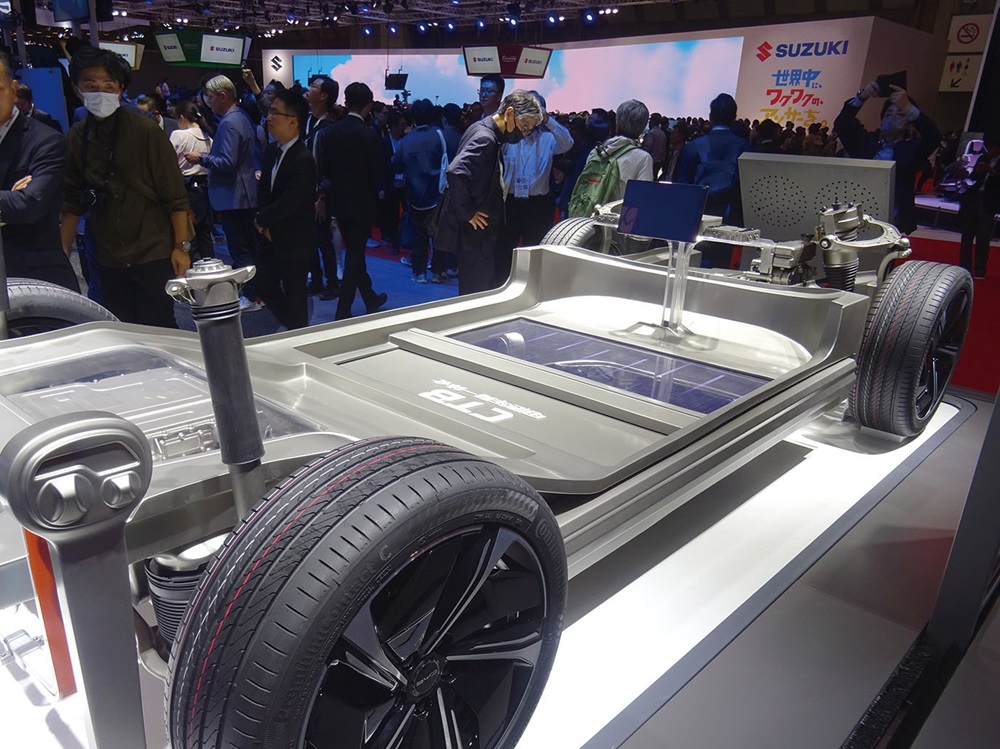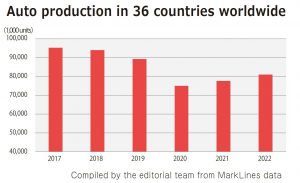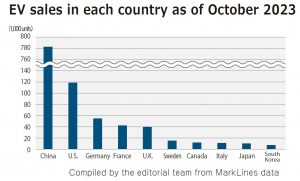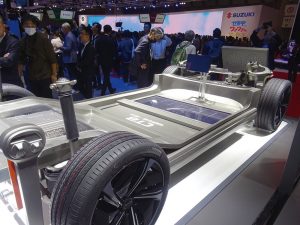
- News
- Basics
- Products
- JP Job shop
- Exhibition
- Interview
- Statistic
- PR
- Download
- Special contents
News
January 11, 2024

The automotive industry is undergoing a once-in-a-century transformation. The situation is becoming more complex, especially with the shift from internal combustion engine (ICE) vehicles to electric vehicles. Global auto production has been recovering, and this trend is expected to continue this year. However, as the shift to electric vehicles continues, there have been policy changes in European countries, labor issues in the United States, etc. that require careful monitoring of the global situation.
This year, the automotive industry is expected to continue the recovery trend that began in 2023. AlixPartners, a U.S. management consulting firm, reported in a July 2023 report that “global auto sales will grow at an annual rate of 3% from 2024 to 2027“. The automotive industry is regaining momentum as the effects of the pandemic and semiconductor shortages fade. However, the complex interplay of several issues surrounding the automotive industry, such as the shift to electric vehicles and related changes in production systems, as well as rising wages for workers, preclude an optimistic outlook.

Recovering from a big slump in 2020
According to a survey by MarkLines, an industry research agency, automobile production in 36 countries totaled 7,805,548 units in October 2023, up about 6% year-on-year; production conditions have been improving, with year-on-year increases in every month since February 2023.
The recovery among Japanese automakers has been particularly pronounced, with Toyota Motor recording record production and sales of 5 million units in the first half of the fiscal year ending March 2024.
Although the global automotive industry is on the road to recovery, this has not yet translated into capital investment. On the other hand, a chairman of a tool maker pointed out that “capital investment in the automotive industry is likely to pick up in 2024“. Based on the inventory trends of major parts manufacturers, he has analyzed that the inventories that companies had built up to prepare for material shortages and other factors are decreasing, and he expects capital investment to start moving this year.

China leads, followed by the U.S. and Europe
Electrification in the automotive industry is on the rise. According to a MarkLines survey, China has the highest number of electric vehicles sold in October 2023, with 783,000 units. The United States is next with 118,000 units, followed by Germany with 54,000 units and France with 42,000 units.
In contrast, only 11,000 units were sold in Japan. Although the expansion of electric vehicle market share is slower than in other countries, many Japanese automakers plan to continue investing in electric vehicles through 2030, with the goal of increasing the number of models and sales of electric vehicles. According to a report by AlixPartners, electric vehicles are expected to “increase their share of Japan’s domestic vehicle sales to 8% in 2025, 20% in 2030, and 39% in 2035”.
Along with the electrification of automobiles, the production structure is also beginning to undergo major changes. One of the best examples is “gigacasting”. Toyota Motor, Ryobi and other companies have announced their adoption of this technology, which enables integrated casting of large aluminum parts. Although it is not certain that the shift from conventional production facilities to new ones will be immediate, Dr. Yoshiharu Inaba, Chairman of the Japan Machine Tool Builders’ Association, speculates, “Eventually, investment in ICE may become a one-time event, and the mainstream will shift to electric axles and other electric vehicle-related investments”.
While there is a strong global trend toward electric vehicles, there is also a movement to reevaluate the direction of this trend. The European Union (EU) had initially announced a policy to ban the sale of new ICE vehicles by 2035, but later changed its policy to allow the sale of ICE vehicles that meet certain conditions. The United Kingdom has also postponed its ban on new ICE vehicles from 2030 to 2035.
Also last September, the United Auto Workers (UAW) in the United States staged a massive strike. The total number of participants reached more than 40,000, and the strike ended after 46 days with an agreement on conditions such as a wage increase. The strike was not only about wages, but also about workers’ growing concerns about employment, as they feared that the shift to electric vehicles would reduce the number of workers needed in the industry.
These and other issues are likely to continue to pose new social challenges as the transition to electric vehicles continues. How each country responds to these issues will need to be closely monitored in the future.
By: Atsushi Mizuno
Staff Editor, SEISANZAI Japan

Body with CTB structure presented by BYD at JAPAN MOBILITY SHOW 2023
Two of the most important trends in the automotive industry are electrification and “mobility”. Mobility refers to all forms of transportation, including vehicles. Many automakers have begun to develop mobility in addition to electric vehicles.
This was clearly evident at last year’s “JAPAN MOBILITY SHOW 2023”. Japanese automakers unveiled new models of electric vehicles and showcased their latest production technologies, and they also focused on proposing mobility solutions.
Gigacasting, which allows large parts to be molded in one piece, and the use of “all solid-state batteries”, which are safer than lithium-ion batteries and feature fast charging, stood out at the show. BYD’s “Cell to Body (CTB)” structure, in which the battery is integrated into a part of the vehicle body, improves the strength of the vehicle body and increases the number of batteries installed.
In addition to electric vehicles, companies are also focusing on mobility. Many companies are working to develop mobility vehicles for air travel, such as the “eVTOL,” an electric aircraft that can take off and land vertically, or drones. This shows the direction in which automakers are heading.